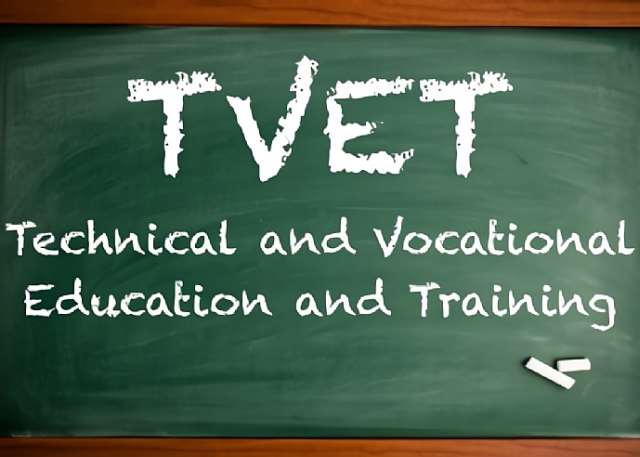
In the world of business today where revenue, profit margins, and market share often claim the spotlight, there exists a critical backstage operation that, for too long, has been relegated to a simple line item on the general and administrative expenses sheet – the Human Resources function. For many executives, HR is a cost center, a necessary conduit for payroll, benefits, and compliance.
This perspective, while common, is a profound and costly miscalculation. In the modern knowledge economy, where intellectual capital and human potential are the primary drivers of competitive advantage, the HR function is not merely a cost center; it is the very engine of organizational vitality.
The challenge, then, is not to minimize HR costs, but to optimize them. It is to shift from seeing HR as an expense to be controlled, to understanding it as a strategic investment to be managed. Determining and running HR costs is, therefore, one of the most crucial strategic disciplines a leadership team can master.
The first step in this journey is to move beyond the simplistic view of HR costs as merely the salaries of the HR team. To truly determine the full scope, one must adopt a holistic framework. HR costs can be broadly categorized into two interconnected buckets – the cost of running the HR function itself, and the cost of managing the entire employee lifecycle across the organization.
The former includes the operational expenses of the department, while the latter encompasses all people-related expenditures, from recruitment to separation. This distinction is vital. A lean HR department might look efficient on paper, but if its under-resourcing leads to high company-wide turnover or poor hiring decisions, the true cost to the organization is catastrophic.
Determining the True Cost: A Deeper Dive into the Components
Let us begin with the cost of the HR function. This includes the direct costs of HR personnel—salaries, benefits, and bonuses for everyone from the Chief Human Resources Officer (CHRO) to HR business partners, recruiters, and coordinators. But it extends far beyond payroll.
It encompasses the technology that powers the people operations – the Human Resource Information System (HRIS), applicant tracking systems, performance management software, and learning management systems. These platforms represent significant investments in licensing, implementation, and ongoing maintenance.
Furthermore, there are costs associated with professional development for the HR team itself, certifications, memberships to industry bodies, and external consulting fees for specialized projects like compensation benchmarking or organizational design.
The second, and vastly larger, category is the cost of the employee lifecycle. This is where the strategic weight of HR cost management truly lies. It starts with acquisition costs. These are the tangible expenses of recruiting new talent – job board postings, fees to external search firms, background checks, and the cost of onboarding.
However, the more significant, often hidden, acquisition cost is the time invested by hiring managers and team members in interviewing candidates, time diverted from their core responsibilities. A protracted recruitment process for a critical role can have a substantial opportunity cost.
Once hired, the most substantial people cost emerges – compensation and benefits. This includes not only base salaries and wages but also bonuses, commissions, health insurance, retirement plans, and other perks. These are direct costs that are relatively easy to quantify but require sophisticated strategy to structure in a way that attracts, retains, and motivates top talent without eroding profitability.
Then comes the cost of development and engagement. This includes training programs, leadership development initiatives, tuition reimbursement, and the technology to deliver these programs. It also encompasses the “softer” investments in employee engagement – team-building events, wellness programs, and recognition platforms.
While some may view these as discretionary, a wealth of research, from sources like Gallup and the Harvard Business Review, demonstrates a direct correlation between investment in engagement and critical business outcomes like productivity, innovation, and retention.
Perhaps the most telling metric, and the one most sensitive to HR effectiveness, is the cost of turnover. The departure of an employee triggers a cascade of expenses. There are separation costs, such as severance pay or accrued vacation payouts. But the true burden lies in the replacement costs, which often mirror or exceed the original acquisition costs – recruiting fees, onboarding time, and the lost productivity during the vacancy and the new employee’s ramp-up period.
The Center for American Progress estimates that replacing an employee can cost anywhere from 20% of a mid-level employee’s annual salary to 213% for a highly specialized executive. When turnover becomes a pattern, it drains institutional knowledge, damages morale, and creates a perpetual cycle of recruitment expenditure.
Therefore, investments in retention, whether through competitive compensation, a positive culture, or growth opportunities, are not merely feel-good expenses. They are a direct defence against one of the largest and most destructive people-related costs.
Perhaps the most telling metric, and the one most sensitive to HR effectiveness, is the cost of turnover. Therefore, investments in retention, whether through competitive compensation, a positive culture, or growth opportunities, are not merely feel-good expenses they are a direct defence against one of the largest and most destructive people-related costs.
From Determination to Execution: Strategies for Running HR Costs Effectively
Understanding the composition of HR costs is only half the battle. The real art lies in running these costs effectively, transforming them from a passive financial drain into an active strategic lever.
This requires a shift in mindset from cost-cutting to value creation. The cornerstone of this approach is through data-driven decision-making. Gut feelings about HR initiatives are no longer sufficient. Modern HR leaders must leverage analytics to answer critical questions.
What is the return on investment (ROI) of our leadership training program? Does it lead to higher team engagement scores and lower turnover in those leaders’ departments? Which recruitment sources yield the highest-quality hires who stay with the company the longest? By tying HR activities to business metrics, the function can justify its investments and reallocate resources from low-impact programs to high-impact ones.
For instance, if data reveals that a particular wellness program has no measurable effect on absenteeism or healthcare claims, those funds could be better invested in a targeted ups-killing program that addresses a critical skill gap.
A second critical strategy is the strategic use of technology. The HR tech landscape has exploded with solutions that automate administrative tasks, from payroll processing to benefits enrolment. Implementing a self-service HRIS can free up HR professionals from transactional work, allowing them to focus on strategic partnerships with business leaders. This represents a fundamental recalibration of cost – shifting spending from administrative overhead to value-added strategic counsel.
Automation not only reduces the risk of human error but also improves the employee experience by providing instant access to information. The initial investment in technology can be substantial, but the long-term efficiency gains and the ability to scale without a linear increase in headcount offer a compelling ROI.
Third, organizations must embrace workforce planning and analytics. Rather than reacting to vacancies, proactive companies forecast their future talent needs based on business strategy. This allows for a more strategic approach to recruitment, development, and even contingent labour.
If a company knows it will need data scientists in 18 months, it can begin building a talent pipeline through internships, partnerships with universities, and internal training, which is often more cost-effective than a frantic, expensive search on the open market. This forward-looking approach to managing human capital ensures that HR spending is aligned with long-term objectives, not short-term crises.
Furthermore, a focus on manager effectiveness is a powerful lever for cost control. The relationship between an employee and their direct manager is the single most significant factor in engagement and retention. Investing in training managers to lead effectively, provide constructive feedback, and support career development is a highly targeted way to reduce voluntary turnover.
As the saying goes, people don’t leave companies, they leave managers. By strengthening the leadership backbone of the organization, companies protect their most valuable asset and mitigate the exorbitant costs associated with turnover.
Finally, a flexible and agile approach to total rewards is essential. The era of one-size-fits-all compensation and benefits is over. A personalized approach, offering a menu of options that cater to different life stages and preferences (e.g., student loan repayment assistance versus enhanced retirement contributions, or flexible work arrangements versus on-site childcare), can often achieve higher perceived value for the employee without a commensurate increase in cost for the employer. This strategic design of the rewards package maximizes the impact of every dollar spent on compensation.
The Strategic Imperative: HR as an Investment, Not an Expense
The task of determining and running HR costs is a complex, multifaceted discipline that sits at the heart of sustainable business success. It demands a sophisticated understanding of both finance and human behaviour.
The goal is not to create the cheapest possible HR function, but the most effective one. A poorly resourced HR department may have a low operational budget, but it will inevitably lead to higher costs across the entire organization through poor hiring, low engagement, and rampant turnover.
Determining and running HR costs is, ultimately, about making conscious choices. It is about choosing to invest in talent acquisition processes that secure top performers, in development programs that unlock potential, in a culture that inspires loyalty, and in a leadership team that views its people as the ultimate source of value.
In the final analysis, the most important cost a business will ever determine is the cost of not making these strategic investments. The engine of your organization is running; the question is whether you are merely paying for its fuel, or strategically tuning it for peak performance and a long, victorious journey.
References for Further Reading
- Cascio, W. F., & Boudreau, J. W. (2011). Investing in People: Financial Impact of Human Resource Initiatives. FT Press.
- Fitz-enz, J. (2009). The ROI of Human Capital: Measuring the Economic Value of Employee Performance.
- Gallup, Inc. (2022). State of the Global Workplace Report.
- Ulrich, D., & Dulebohn, J. H. (2015). Are we there yet? What’s next for HR? Human Resource Management Review, 25(2), 188-204.
The post HR Frontiers with Senyo M Adjabeng: The finance of HR: A strategic guide to determining and running HR Costs appeared first on The Business & Financial Times.
Read Full Story















Facebook
Twitter
Pinterest
Instagram
Google+
YouTube
LinkedIn
RSS